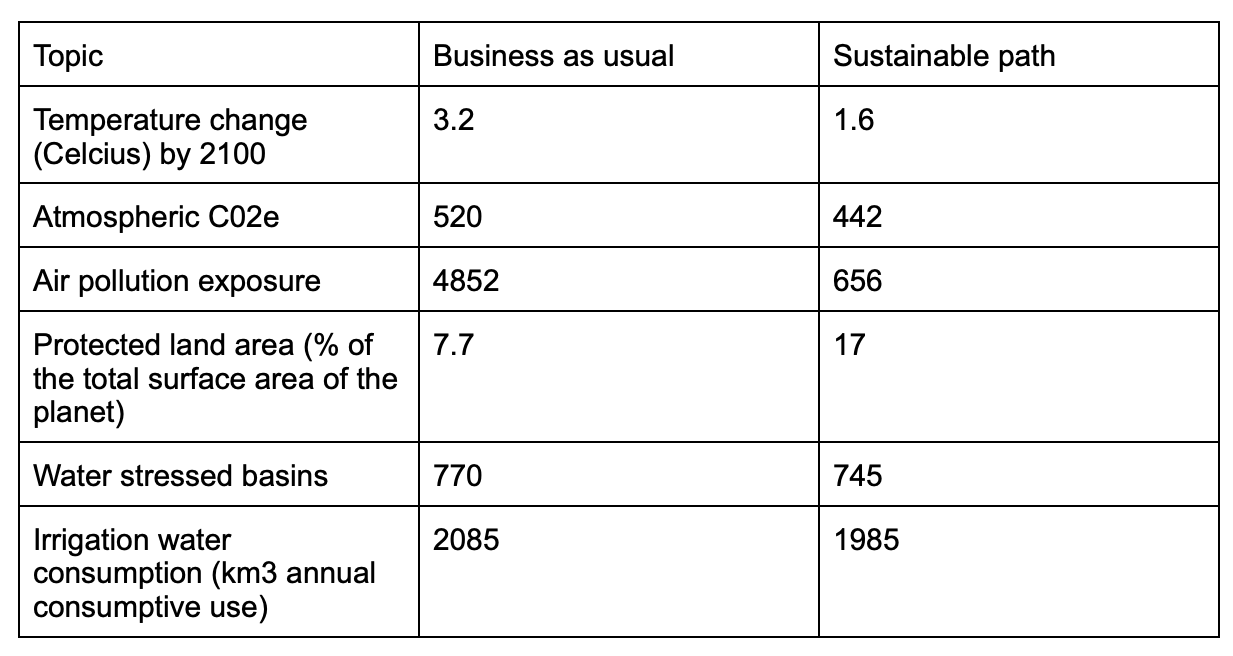The Future of Sustainability
Sustainability has become a hot topic over the past few years. People and organisations alike have been aiming to become more sustainable. Over time with more people joining in, this has become beneficial to the planet.
One environmental success is that the hole in the ozone layer has been slowly recovering! Since the ban on halocarbons, which contributes to the depletion of the ozone layer, the ozone layer has slowly been recovering and the data clearly show a trend in the decreasing area of the ozone hole [1].
But can the current trajectory of sustainability (business as usual) be maintained and is it enough?
For a while now, people have aimed to 'become sustainable', now, they must become 'more sustainable'.
For example, how does the United Nations’ Sustainable Development Goals (SDGs), a set of 17 measures for “a world where all people are fed, healthy, employed, educated, empowered and thriving, but not at the expense of other life on Earth.”, look compared to a business as usual approach to the future? The Sustainable Development Goals (SDGs), also known as the Global Goals, were adopted by the United Nations in 2015 as a universal call to action to end poverty, protect the planet, and ensure that by 2030 all people enjoy peace and prosperity. By adopting and following these goals, we can step onto a more sustainable path and achieve a more sustainable future.
At our current business as usual trajectory, according to current scientific models, the global temperature will rise by 3.2 degrees Celsius by the time we reach the year 2100. This goes against what the COP26 discussions aimed to achieve. The 2021 United Nations Climate Change Conference aim was to limit the rise in global temperature to 1.5 degrees Celsius [3]. By not taking any further actions and aiming to follow the SDGs, we will not be able to achieve this goal. Moving forward and following the SDGs we can limit the global temperature change by 1.6 degrees Celsius. A massive improvement from the business as usual approach [4].
Please take a moment to browse over the table below to see other examples of how taking a more sustainable approach can improve the environment. Improving our methods and taking steps to do more can result in there being more protected land for us and animals alike and limit the amount of atmospheric carbon dioxide. These are just some examples!

Stepping away from using fossil fuels and other energy sources that contribute to climate change is a major step to maintaining the health of the environment and not worsening it. At the current trajectory, fossil fuels are modelled to be the major producer of energy at a whopping 76% by the year 2050! Under a more sustainable method, this could be reduced to an amazing 13%! [4]. This means that coal and gas reliant countries can switch to cleaner energy producing methods like wind, hydro and nuclear energy production etc. Chemicals and emissions that would normally negatively affect the environment would be minimised, helping us do the most to improve and heal the environment.
The table below details exactly how we can favour renewable energy over fossil fuels by the year 2050.

Becoming even more sustainable is what we as a collective need to start aiming for. By the time we get to the years 2050/2100, at our current business as usual trajectory, it will not be good enough. We need to improve!
References
[1]:https://public.wmo.int/en/media/news/record-breaking-2020-ozone-hole-closes
[3]: https://ukcop26.org/wp-content/uploads/2021/11/COP26-Presidency-Outcomes-The-Climate-Pact.pdf
[4]: https://www.nature.org/en-us/what-we-do/our-insights/perspectives/the-science-of-sustainability/
-1.png?length=384&name=Blog%20header%20(5)-1.png)
.png?length=384&name=Blog%20header%20(7).png)